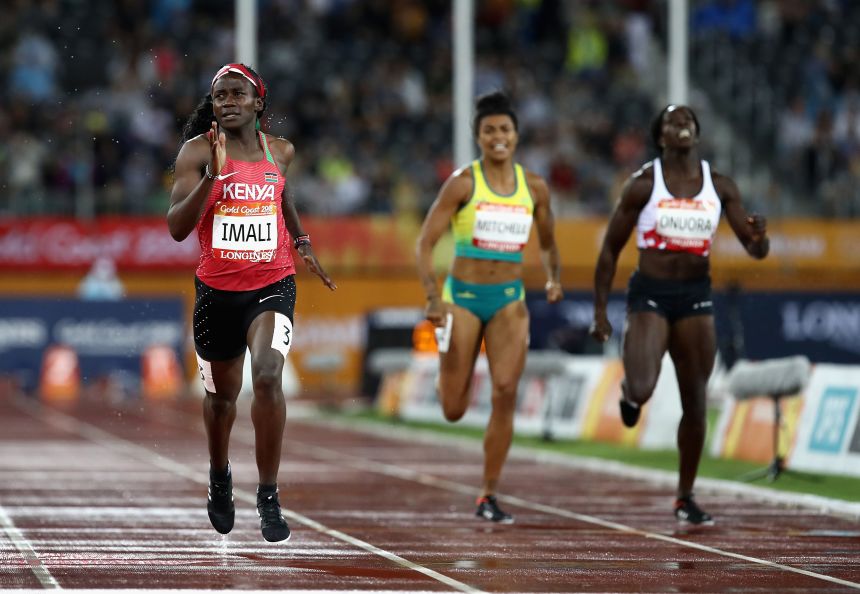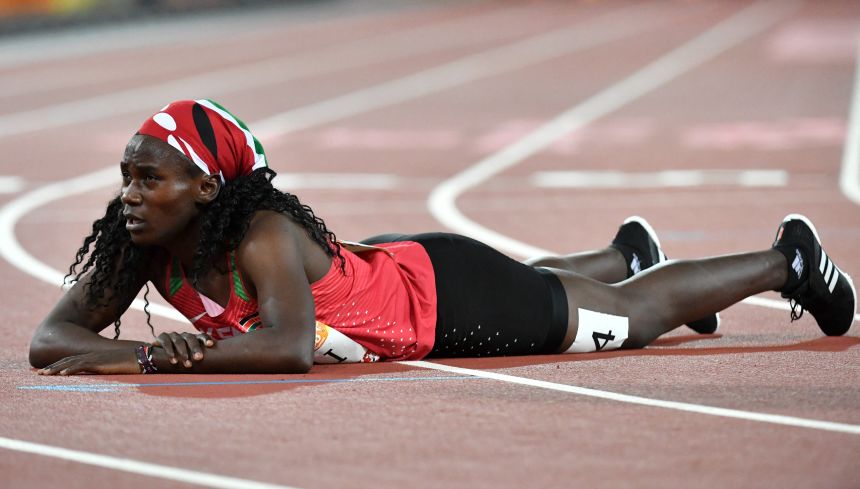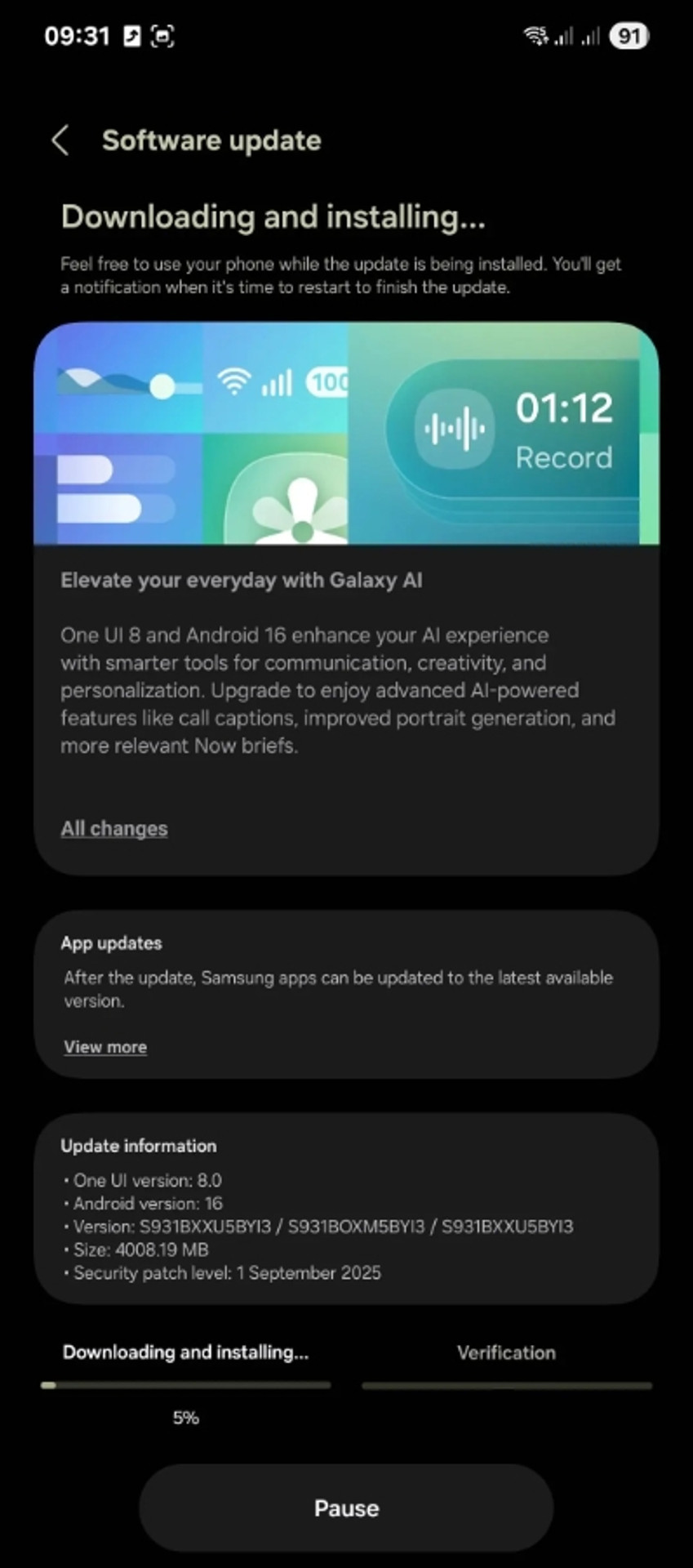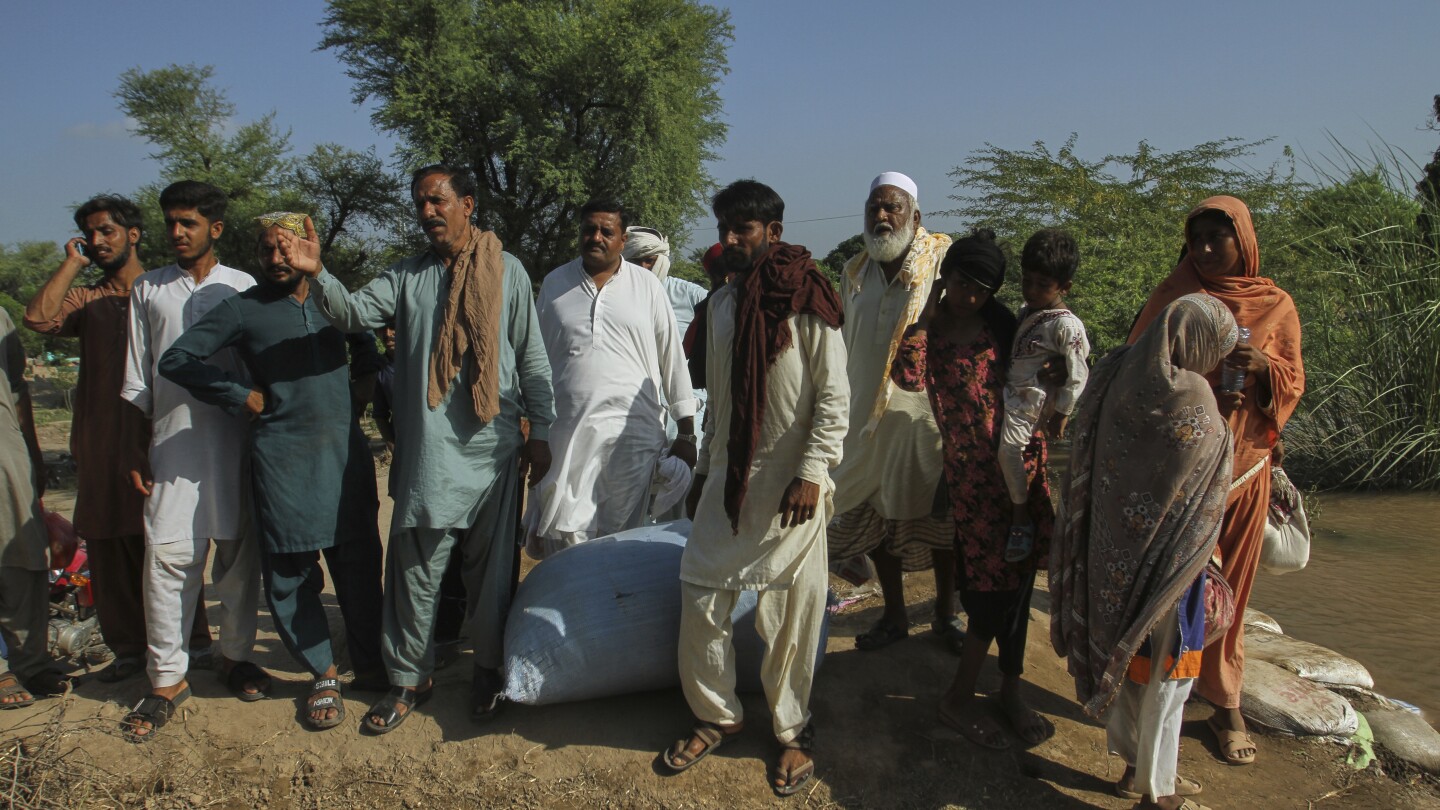Ugandan middle distance runner Docus Ajok dreamed of being an Olympic champion.
She had been competing professionally since 2014, representing her country proudly at the Commonwealth Games, World Athletics Championships and World University Games.
In 2019, she said she was asked to take a testosterone test by her national federation, under the directive of world track and field governing body World Athletics (WA). It seemed as routine as anything else in her career to date, but that was to be the end of everything she had known professionally.
Soon after, Ajok said she was told by national governing body Uganda Athletics that she was no longer allowed to compete in 800m and 1,500m races, citing directives from WA.
She told CNN Sports she was never shown the results of the test, but barred from competing, her dreams lay in tatters.
Ajok said that after the test, she was restricted from competing. “They started coming out with rules, regulations proposing medical steps,” she added.
“I used to help my family with the medical bills, school fees, with my siblings, and many other things, even things for myself. (Now) we’re not even getting anything. We have just been struggling with life.”
Ajok’s story is similar to that of Kenyan sprinter Maximila Imali, who showed great promise in track and field and qualified for the 800 meters at the world junior athletics championships, excelling in her heats but falling in the finals. Determined to improve, she had her sights set on more competitions.
But in 2014, all that came crashing to a halt when she says she was told by an official from Athletics Kenya to take a blood test and undergo a physical examination, per a request by the International Association of Athletics Federations (IAAF), now known as WA.

Several months after those tests, her manager told her in a phone call that she would not be allowed to compete in the 800m category, citing high testosterone levels found in her blood. He went on to list all the races she could not compete in and shared a letter from IAAF explaining the regulations.
“My career ended just like that. Nobody is fighting for me. My country has just left me the way I am. I’m just like a past tense – I’m not just that person who was bringing glory to the country.
“Now, I cannot do anything. I cannot provide for myself (or) my family; my family are depending on me. I have a son depending on me,” she told CNN. “Athletics is everything that I have.”
CNN Sports has reached out to Uganda Athletics and Athletics Kenya for comment.
Just like Ajok and Imali, a raft of athletes will no longer be allowed to compete in the women’s category at the World Athletics Championships, which are currently taking place in Tokyo, Japan.
Track and field body WA announced earlier this year that beginning from September 1, anyone wanting to compete in the “female category” of its elite events would be required to take a “once-in-a-lifetime test” in the form of a cheek swab or blood test that will screen athletes’ genetic samples. This will determine whether they contain the SRY gene – or “a genetic surrogate for a Y chromosome” – according to the organization.
The decision comes following a World Athletics Council meeting where, along with a raft of other policy changes, the council agreed to adopt multiple recommended conditions of “eligibility in the female category,” WA confirmed in a press release.
Most people who have the SRY gene live their lives as men, but there are some exceptions.
“The SRY gene is a key gene, probably the key gene, on the Y sex chromosome that directs a developing embryo towards the male development pathway,” Alun Williams, professor of sport and exercise genomics at Manchester Metropolitan University explained.
“But there are a few – a very small proportion, but a few exceptions – and that’s where it gets complicated.”
Variations in SRY gene expression are just one of a wide range of variations in chromosomes, hormones, and anatomy that occur naturally in human development. People with these variations are sometimes known as intersex, and have traits that may not align with typical binary definitions of female or male. These variations are sometimes called differences in sex development, or DSD.
Williams said estimates suggest that between 0.02% to 2% of the population have differences in sex development, depending on definition. With a global population of over 8 billion people, this could mean that tens of millions of people worldwide are affected.
Payoshni Mitra, executive director of athlete rights organization Humans of Sport told CNN Sports that sometimes, athletes do not know they have a DSD.
“Disproportionately, these regulations for decades now have impacted athletes from the Global South. In these countries, athletes do not have a support system that can help them understand exactly what is going on,” she said.

Per its regulations, World Athletics says that: “‘biological male’ means someone with a Y chromosome and ‘biological female’ means someone with no Y chromosome, irrespective of their legal sex and/or gender identity.”
But Williams explained: “Some people have a normally functioning SRY gene but a rare variation in one of several other genes required for it to have its usual effects, so they develop essentially as females despite having the SRY gene.”
Williams explained that – in most people – sex chromosomes, other genes, sexual organs, internal organs and external organs are aligned male or female, but that people with DSD have “some different combinations of them,” resulting in a “whole range of possibilities.”
Politics and scrutiny from around the world have caused athletics associations to adopt a variety of different approaches to allowing – and excluding – women with DSD from competition in women’s sport.
The new World Athletics regulations say that “biological males” who have “not gone through male sexual development including any type of male puberty,” are still eligible to compete in the female category.
CNN Sports asked World Athletics if it had definitions of “male sexual development,” and “male puberty” to which the governing body did not offer an explanation to how it judges these developmental stages.
Meanwhile, women whom World Athletics considers to have DSD – and who also have XY chromosomes – who had previously complied with the governing body’s previous eligibility criteria are eligible to compete in World Rankings Competitions so long as they maintain the concentration of testosterone in their blood “below 2.5 nmol/L at all times” and “cooperate fully with World Athletics’ efforts to monitor the concentration of testosterone” in their blood.
DSD athletes who do not have complete androgen insensitivity syndrome, and who had not previously competed and satisfied World Athletics eligibility criteria will not be able to compete in women’s world rankings under the latest rules.
This means that under the new rules, some emerging DSD athletes may never be able to take part in an elite women’s race.
In 2023, WA announced new regulations prohibiting athletes who have gone through what it called “male puberty” from participating in women’s world rankings competitions. WA said the exclusion would apply to “male-to-female transgender athletes who have been through male puberty.”
Now, effective since September 1, WA has combined the eligibility framework for DSD and transgender athletes, with a working group asserting that “testosterone suppression in 46XY DSD and 46XY transgender individuals can only ever partly mitigate the overall male advantage in the sport of Athletics.”
“New evidence clarifies that there is already an athletically significant performance gap before the onset of puberty,” the document alleges.
But some leading scientists disagree with those conclusions.
Molecular biologist Williams explained: “There’s almost no direct evidence about what amount of performance advantage someone with a DSD might have, and that’s probably highly variable between types of DSD.”
As women’s participation in elite sport has grown, scrutiny of their bodies, especially if they don’t fit within a given place or time period’s notions of femininity, has also evolved.
As such, in the mid 1960s, governing bodies began introducing sex tests to restrict some women from competitions, alleging without evidence that they were men.
The first systematic sex tests took place at the 1966 European Athletics Championships in Budapest, where women underwent a visual examination of their genitals and secondary sexual features. The exams, sometimes referred to as “nude parades,” were justified as being intended to identify men masquerading as women, but were considered degrading and humiliating by athletes and experts.

Two years later at the Mexico City Summer Olympics, the International Olympic Committee (IOC) introduced Barr body testing calling it “simpler, objective and more dignified.” The test, which identifies inactivated X chromosomes to determine an athlete’s chromosomal makeup, was done by a cheek swab.
“In those days, there was a belief that XY were reserved for men and XX for women,” Arne Ljungqvist, who has served as chairman of the IOC’s Medical Commission, told CNN Sports.
“Originally, it was thought it could distinguish between females (usually XX) and males (usually XY),” Williams explained. “While that works for the majority of the population, it sometimes doesn’t when a DSD exists.”
It was used until the 2000 Sydney Summer Games, after which the tests were discontinued based on recommendations from the IOC’s Athletes Commission.
Medical experts now criticize the Barr body test as inaccurate and harmful; failing to recognize the complexity of factors that determine sex.
Ljungqvist, who has served as chairman of the IOC’s Medical Commission, though not during the time that the Barr tests were used, explained that since the Barr test has been abandoned and a new PCR swab test to identify the SRY gene is now used, “the problems are still there. They will single out those women who do have an Y chromosome.”
“One of the reasons why most of those methods were done away with was that they singled out wrong persons because many of those XY women have no advantage, they have complete androgen insensitivity,” he explained.
Some people are born with androgen insensitivity syndrome – if they have complete androgen insensitivity syndrome, their testosterone has no effect on sex development. If they have partial androgen insensitivity syndrome, testosterone may have had some effect on their sex development.
The IAAF ended mandatory sex testing in 1992 and the IOC dropped blanket testing in 1999 – but they continued to conduct medical evaluations on a case-by-case basis.

While World Athletics President Sebastian Coe said the latest mandatory SRY tests are designed to be “non-invasive,” many of the experts CNN Sports interviewed for this piece decried their use.
Williams said that there are some areas where genetic testing is acceptable: for example, when used in criminal investigations to identify suspects and victims, and in healthcare settings to inform patients of healthcare concerns. But he called the decision to test athletes this way “appalling.”
“It is not really fully voluntary. It is a requirement that to be eligible to compete at that high competitive level, you have to have this test. It’s not for the benefit of the person being tested,” he said.
“The impact on those individuals is absolutely huge, so there really needs to be extremely good justification for doing it that would somehow outweigh the huge life-changing consequences for those people that would receive information.”
Athlete rights advocate Mitra told CNN Sports that speculation around the results of athletes’ tests is often highly publicized in the media.
“We have had so many cases where athletes have been harmed because of the sudden ‘outing,’ because of the scrutiny they have received as a result of the ‘outing.’ The current set of regulations with focus on SRY gene are designed in a way that more athletes will face this,” she said.
Mitra added that most “outings” happen before a big sporting event, such as a world championship or Olympics, where athletes are already being scrutinized by the media in the run-up to such competitions.
“Sometimes, athletes do not know (that they have a DSD) themselves – disproportionately, these regulations for decades now have impacted athletes from the Global South,” she said. “In these countries, athletes do not have a support system that can help them understand exactly what is going on.
“Athletes are going to be harmed, outed, scrutinized.
“We need to understand that many of these athletes come from countries which have lesser human rights protections, particularly for people who are perceived to be part of the LGBTIQ community.”
Ugandan middle distance runner Ajok said that she was advised by Uganda Athletics in 2019 that she was either required to take medication to compete in middle distance races, or shift to longer races.
Ajok said that a friend, a fellow Ugandan athlete, told her that after taking medication and undergoing surgery in order to compete, they were left feeling devastated.

“She could not run the way she used to run. She started developing body pain. She could not sleep at night. Sometimes, when she sleeps, she sweats the whole night … It has disorganized the body system, or maybe it doesn’t function normally the way it used to be.”
In a statement, a World Athletics spokesperson told CNN Sports: “World Athletics has never suggested that DSD athletes undergo surgery or medical intervention to compete in the female category. Our protocols regarding athletes found ineligible to compete due to their testosterone levels are well documented and are based on independent reference centres specialising in the athlete’s particular condition being provided to athletes and their representatives for any follow up or decisions that the athlete chooses to make.”
Ajok added that her friend, who had a high profile because she was an athlete, was abused, stigmatized and left without support following her ordeal. She eventually relocated to Europe.
Because of this, Ajok doesn’t want to take medication or have surgery herself.
“It’s not right for me to change my body because the change they want me to (make) is not healthy for myself.
“If they wanted us to be alive, they could not first force us to take that medication. They have been seeing those who took the medicine, how they are feeling, how they are suffering.”

Kenya’s Imali feels the same, and like Ajok, she says she won’t take medication or have surgery.
“It’s very painful for someone to decide for you to be who they want you to be. For me, I’m okay being the way I am, and I don’t have any problem being Maximila. It is very important for someone to be who she is,” she said.
“No doctor can come and do procedures on me, without me, without my consent. I’m not sick. So why are the doctors coming to do any procedures?
“I choose not to do anything, any medication or anything because I know I was born as a woman. I was raised as a woman… This so-called science cannot decide for me.”










